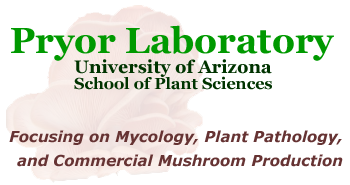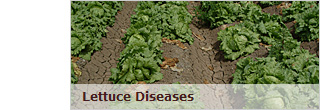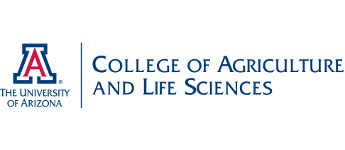Applied and Basic Mycological Research
The Pryor Lab focuses on six areas of mycological research:
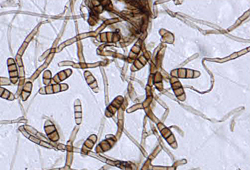 1. Fungal systematics. The genus Alternaria and related genera of anamorphic fungi represent some of the most common fungi encountered in nearly every ecosystem. Their ecological roles span from ubiquitous saprobes to destructive plant pathogens. Our lab has conducted systematic study in this group of fungi for nearly 20 years and has contributed substantially to taxonomic revisions of Alternaria, Ulocladium, Embellisia, Nimbya, and other related groups. Our systematic work spans classical morphological analyses and more contemporary phylogenetic reconstruction based upon protein-coding gene sequences. More recently, our systematic work has focused on integrating high density morphometric data sets automatically derived from computer-driven microscopy with whole genome data and gene expression studies.
1. Fungal systematics. The genus Alternaria and related genera of anamorphic fungi represent some of the most common fungi encountered in nearly every ecosystem. Their ecological roles span from ubiquitous saprobes to destructive plant pathogens. Our lab has conducted systematic study in this group of fungi for nearly 20 years and has contributed substantially to taxonomic revisions of Alternaria, Ulocladium, Embellisia, Nimbya, and other related groups. Our systematic work spans classical morphological analyses and more contemporary phylogenetic reconstruction based upon protein-coding gene sequences. More recently, our systematic work has focused on integrating high density morphometric data sets automatically derived from computer-driven microscopy with whole genome data and gene expression studies.
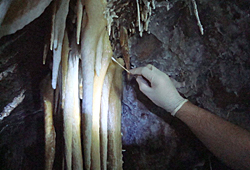 2. Fungal community characterizations. Fungal communities represent some of the most important microbial components of agricultural and native ecosystems. Modern techniques in molecular biology enable the characterization of such communities on levels never before possible. Recent work in the Pryor lab has included studies of mycological communities in Kartchner Caverns, AZ, and has revealed complex community structure in bat guano and on iconic cave carbonate structures. Additional studies have focused or fungal rhizosphere communities associated with both native and invasive grass species in the Las Cienegas National Conservation Grassland in southern Arizona.
2. Fungal community characterizations. Fungal communities represent some of the most important microbial components of agricultural and native ecosystems. Modern techniques in molecular biology enable the characterization of such communities on levels never before possible. Recent work in the Pryor lab has included studies of mycological communities in Kartchner Caverns, AZ, and has revealed complex community structure in bat guano and on iconic cave carbonate structures. Additional studies have focused or fungal rhizosphere communities associated with both native and invasive grass species in the Las Cienegas National Conservation Grassland in southern Arizona.
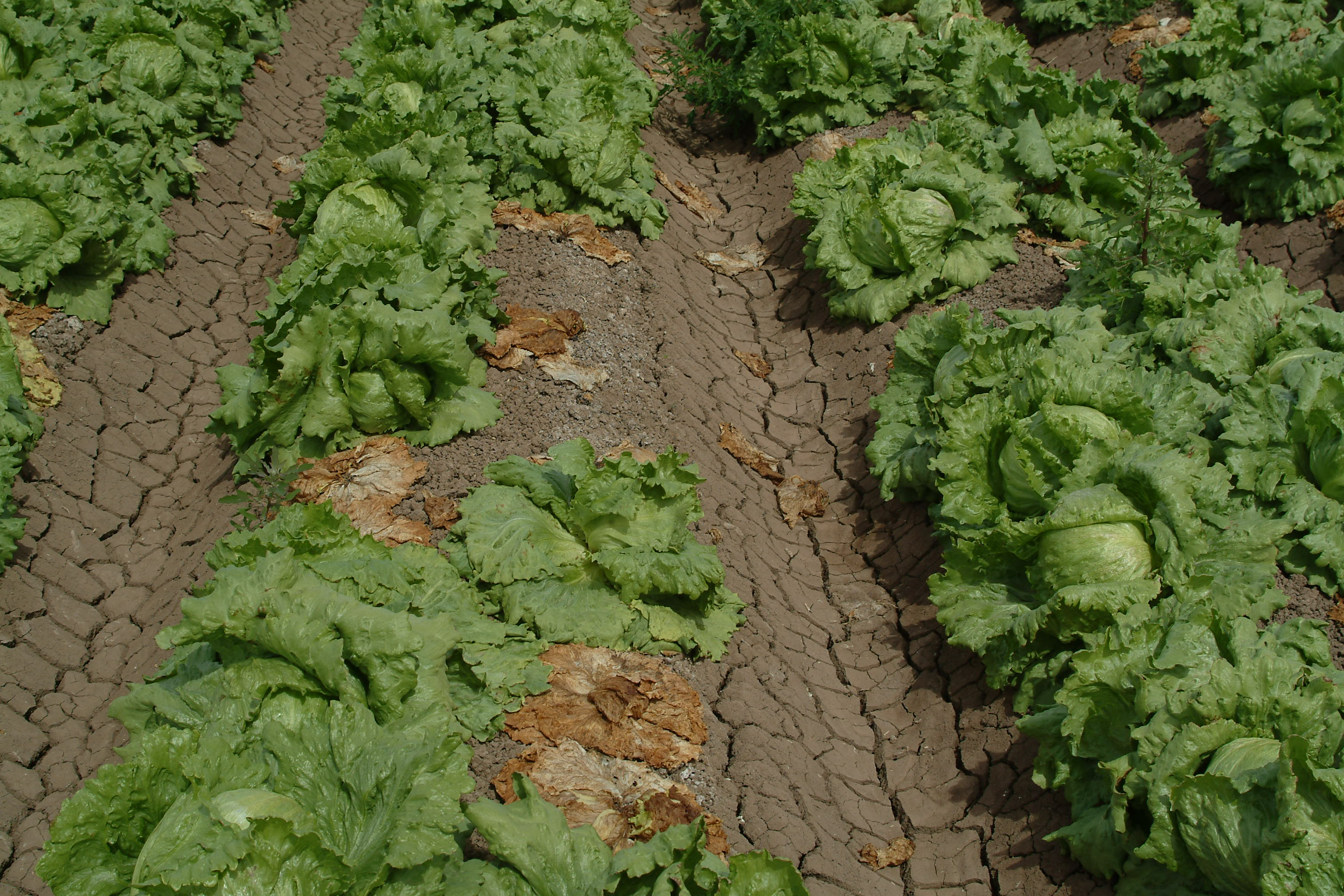 Plant pathology.3. Agriculture in the southwest US, and in other arid and semi-arid areas, offer some unique opportunities and challenges in regard to plant disease management in vegetable, tree, and field crops. Our lab conducts research on disease of cotton, citrus, lettuce, and various nut crops, with a focus on IPM practices that reduce chemical inputs while enhancing natural biocontrol systems. These efforts become increasingly important as we approach a global population of 9 billion and are faced with increased global warming and an expansion of arid land agriculture near current population centers.
Plant pathology.3. Agriculture in the southwest US, and in other arid and semi-arid areas, offer some unique opportunities and challenges in regard to plant disease management in vegetable, tree, and field crops. Our lab conducts research on disease of cotton, citrus, lettuce, and various nut crops, with a focus on IPM practices that reduce chemical inputs while enhancing natural biocontrol systems. These efforts become increasingly important as we approach a global population of 9 billion and are faced with increased global warming and an expansion of arid land agriculture near current population centers.
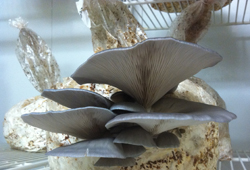 4. Production of gourmet and medicinal mushrooms. One of the fastest growing agricultural commodities is commercially produced mushrooms. The Pryor lab is developing methods for efficient production of gourmet and medicinal mushrooms in controlled environment facilities that can be adapted to any regional climatic conditions. Moreover, our production systems focus on producing mushrooms on commonly available landscape and post-consumer wastes that might normally be sent to the landfill, thus, reducing the local community footprints and developing sustainable systems for recycling and food production. The MycoCats program at the University of Arizona was developed to reduce waste and produce sustainable, healthy food by harnessing the degradative capabilities of gourmet mushrooms. The MycoCats is a student-run program, funded through the UA Green Fund, and operates via research, education, and extension -- offering mycology related courses, laboratory and mushroom production training, participating in outreach events, and investigating biotechnological and bioremediation technologies.
4. Production of gourmet and medicinal mushrooms. One of the fastest growing agricultural commodities is commercially produced mushrooms. The Pryor lab is developing methods for efficient production of gourmet and medicinal mushrooms in controlled environment facilities that can be adapted to any regional climatic conditions. Moreover, our production systems focus on producing mushrooms on commonly available landscape and post-consumer wastes that might normally be sent to the landfill, thus, reducing the local community footprints and developing sustainable systems for recycling and food production. The MycoCats program at the University of Arizona was developed to reduce waste and produce sustainable, healthy food by harnessing the degradative capabilities of gourmet mushrooms. The MycoCats is a student-run program, funded through the UA Green Fund, and operates via research, education, and extension -- offering mycology related courses, laboratory and mushroom production training, participating in outreach events, and investigating biotechnological and bioremediation technologies.
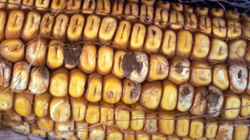 5. Degradation of environmental toxins. Aflatoxin is a mycotoxin produced by fungi in the genus Aspergillus, and is the most carcinogenic naturally produced substance known. Approximately 25% of commonly cultivated crops and food products can become contaminated with aflatoxin including corn, rice, tree nuts, cacao, spices, vegetable oils, chili peppers, and certain grains and legumes. Aflatoxin levels in food is tightly regulated in the U.S. and E.U., but there is currently no federally approved method for decontamination. Interestingly, some of the same enzymes produced by white-rot fungi to decay wood also have the capacity to degrade aflatoxin and many other recalcitrant toxic compounds. We are working to optimize the biodegradation of aflatoxin in a solid-state fermentation system using the edible fungus, Pleurotus ostreatus, also known as the common oyster mushroom.
5. Degradation of environmental toxins. Aflatoxin is a mycotoxin produced by fungi in the genus Aspergillus, and is the most carcinogenic naturally produced substance known. Approximately 25% of commonly cultivated crops and food products can become contaminated with aflatoxin including corn, rice, tree nuts, cacao, spices, vegetable oils, chili peppers, and certain grains and legumes. Aflatoxin levels in food is tightly regulated in the U.S. and E.U., but there is currently no federally approved method for decontamination. Interestingly, some of the same enzymes produced by white-rot fungi to decay wood also have the capacity to degrade aflatoxin and many other recalcitrant toxic compounds. We are working to optimize the biodegradation of aflatoxin in a solid-state fermentation system using the edible fungus, Pleurotus ostreatus, also known as the common oyster mushroom.
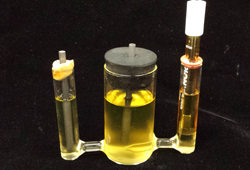 6. Microbial fuel cells. The cutting edge research in the Pryor lab is focused on the integration of fungi in biologically active fuel cells and the generation of electricity. Wood-degrading fungi produce a variety of oxidative enzymes, including laccases, which hold promise for replacement of platinum in a variety of fuel cell designs. Currently, we are optimizing a long-life laccase-based biocathode for use in microsensor devices. Future work will focus on the miniaturization of current fuel cell designs for use in low cost medical diagnostics and treatments.
6. Microbial fuel cells. The cutting edge research in the Pryor lab is focused on the integration of fungi in biologically active fuel cells and the generation of electricity. Wood-degrading fungi produce a variety of oxidative enzymes, including laccases, which hold promise for replacement of platinum in a variety of fuel cell designs. Currently, we are optimizing a long-life laccase-based biocathode for use in microsensor devices. Future work will focus on the miniaturization of current fuel cell designs for use in low cost medical diagnostics and treatments.
